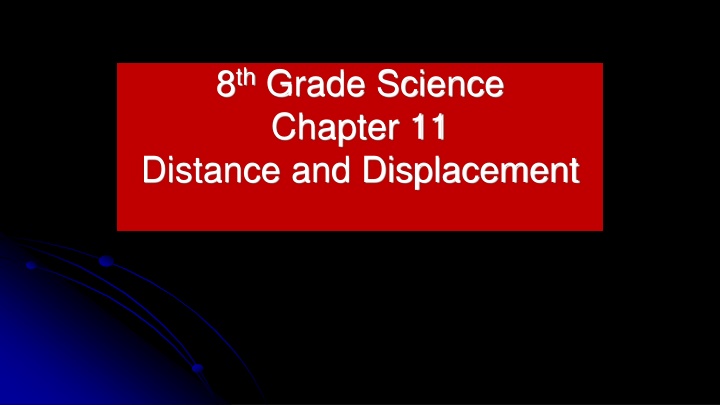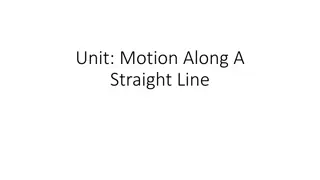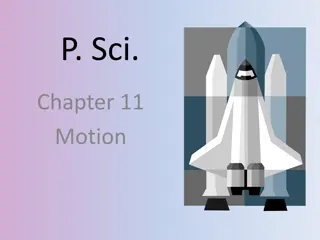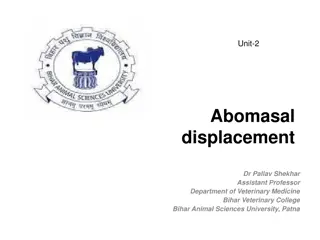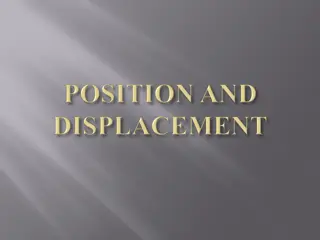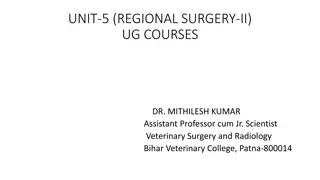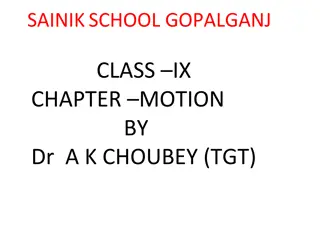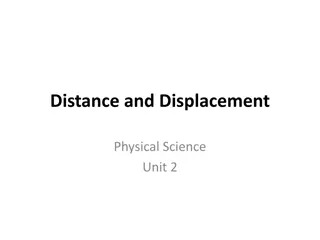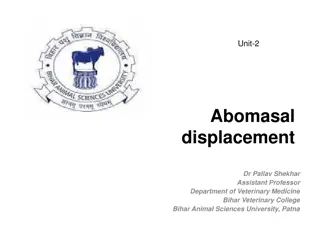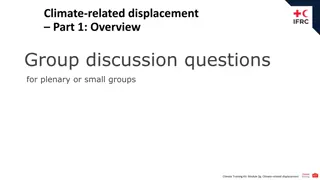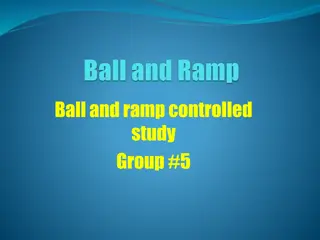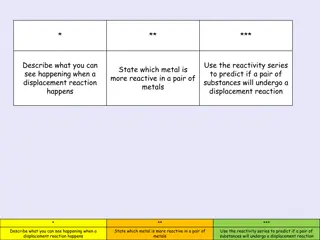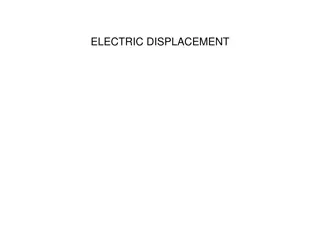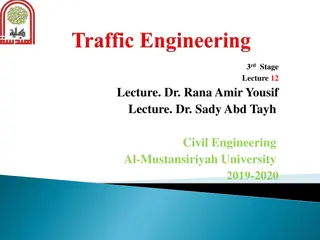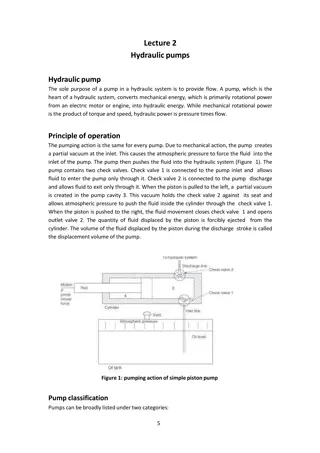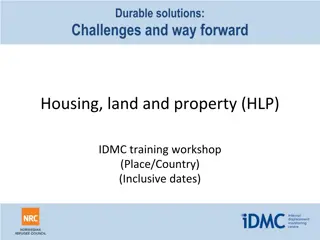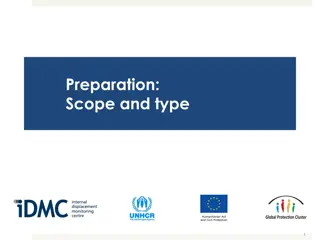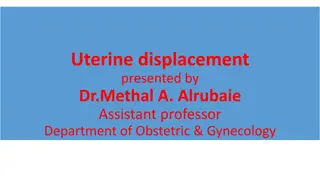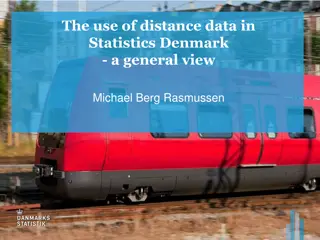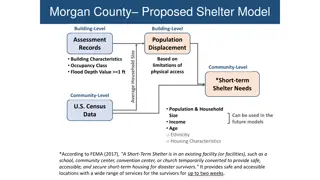Distance and Displacement in Science
Exploring the concepts of distance and displacement in science, this content covers the difference between scalar and vector quantities, methods for determining displacement and distance, and examples of scalars and vectors. It also delves into the fundamental definitions of distance and displacement, showcasing how they are measured and their significance in physics.
Download Presentation

Please find below an Image/Link to download the presentation.
The content on the website is provided AS IS for your information and personal use only. It may not be sold, licensed, or shared on other websites without obtaining consent from the author.If you encounter any issues during the download, it is possible that the publisher has removed the file from their server.
You are allowed to download the files provided on this website for personal or commercial use, subject to the condition that they are used lawfully. All files are the property of their respective owners.
The content on the website is provided AS IS for your information and personal use only. It may not be sold, licensed, or shared on other websites without obtaining consent from the author.
E N D
Presentation Transcript
8thGrade Science Chapter 11 Distance and Displacement
Learning Objectives I can describe the difference between scalar and vector quantities. I can determine displacement and distance using a scale diagram or calculation. I can calculate the displacement of an object with two vector quantities in one direction or at right angles.
Physics Introduction The motion of objects can be described by words. Even a person without a background in physics has a collection of words that can be used to describe moving objects. Words and phrases such as going fast, stopped, slowing down, speeding up, and turning provide a sufficient vocabulary for describing the motion of objects. In physics, we use these words and many more. We will be expanding upon this vocabulary list with words such as (but not limited to) distance, displacement, speed, velocity, and acceleration.
Scalars and Vectors All physical quantities can be divided into two groups scalers and vectors When determining if a quantity is a vector or a scaler you need to ask 1 question, does direction matter? Vector - quantity with both magnitude (size or numerical value) and direction Scalar - quantity with magnitude (size or numerical value) only
Examples of Scalars and Vectors Scalars: Distance Speed Time Mass Energy Vectors: Displacement Velocity Acceleration Momentum Force
Vectors Often represented by arrows. Length of the arrow represents the magnitude (how far, how fast, how strong, etc. depending on the type of vector)
Do you know the difference? Category Quantity 5 m 30 m/sec, East 5 mi., North 20 degrees Celsius 256 bytes 4000 Calories Scalar Vector Vector Scalar Scalar Scalar
Distance Distance (d) how far an object travels or the length of a path between 2 points. Does not depend on direction. Scalar or vector quantity? Measured with a ruler or meter stick Scalar
Displacement Displacement ( x) is the direction and the length of a straight line from the starting point to the ending point or where you are in relation to where you started from. Does depend on direction. Vector Quantity Examples of directions: + and N, S, E, W Angles
Distance and Displacement Let s visit our ant, and we we ll find his distance and displacement. - + 0 1 2 3 4 5 6 7 8 9 10 cm Distance: 3 cm Displacement: +3 cm The positive gives the ant a direction!
Distance and Displacement Find the ant s distance and displacement again. Remember, displacement has direction! - + 0 1 2 3 4 5 6 7 8 9 10 cm Distance: 3 cm Displacement: -3 cm
Distance and Displacement Find the distance and displacement of the ant. - + 0 1 2 3 4 5 6 7 8 9 10 cm Distance: 7 cm Displacement: +3 cm
Displacement and Distance in 2 Directions You walk 3m east. Than turn and go 4m North. What is the distance of the walk? 3m + 4m = 7m Distance - 4m North 3m East
Displacement and Distance in 2 Directions You walk 3m east. Than turn and go 4m North. What is the displacement of the walk? Pythagorean theory A2 + B2 = C2 32 + 42 = C2 9 + 16 = C2 25 = C2 25 = C 4m North 5m NE Displacement - 3m East
Displacement vs. Distance Example of distance: The ant walked 3 cm. Example of displacement: The ant walked 3 cm EAST. An object s distance traveled and its displacement aren t always the same!
Distance vs. Displacement You drive the path, and your odometer goes up by 8 miles (your distance). Your displacement is the shorter directed distance from start to stop (green arrow). start stop
Distance and Displacement What is the distance of the entire trip? What is the displacement of the entire trip? 3 + 3 = 6 miles 0 miles
Distance and Displacement 160 + 120 + 80 = 360m 120m East What is the distance of the entire trip? What is the displacement of the entire trip? Meters (m)
A Distance start to A 11cm Total Distance 11cm 11 cm Displacement - 11cm N
B A 7cm Distance A to B 7cm Total Distance 11cm + 7cm = 18cm 11 cm Displacement - A2 + B2 = C2 72 + 112 = C2 49 + 121 = C2 170 = C2 170 = C C = 13.04 NW
Big Ideas Vectors are quantities with both magnitude (size and numerical value) and direction. An example is displacement. Scalers are quantities with just magnitude (size or numerical value). An example is distance. When 2 vectors are in the same direction you add them and when they are in opposite directions you subtract them.
